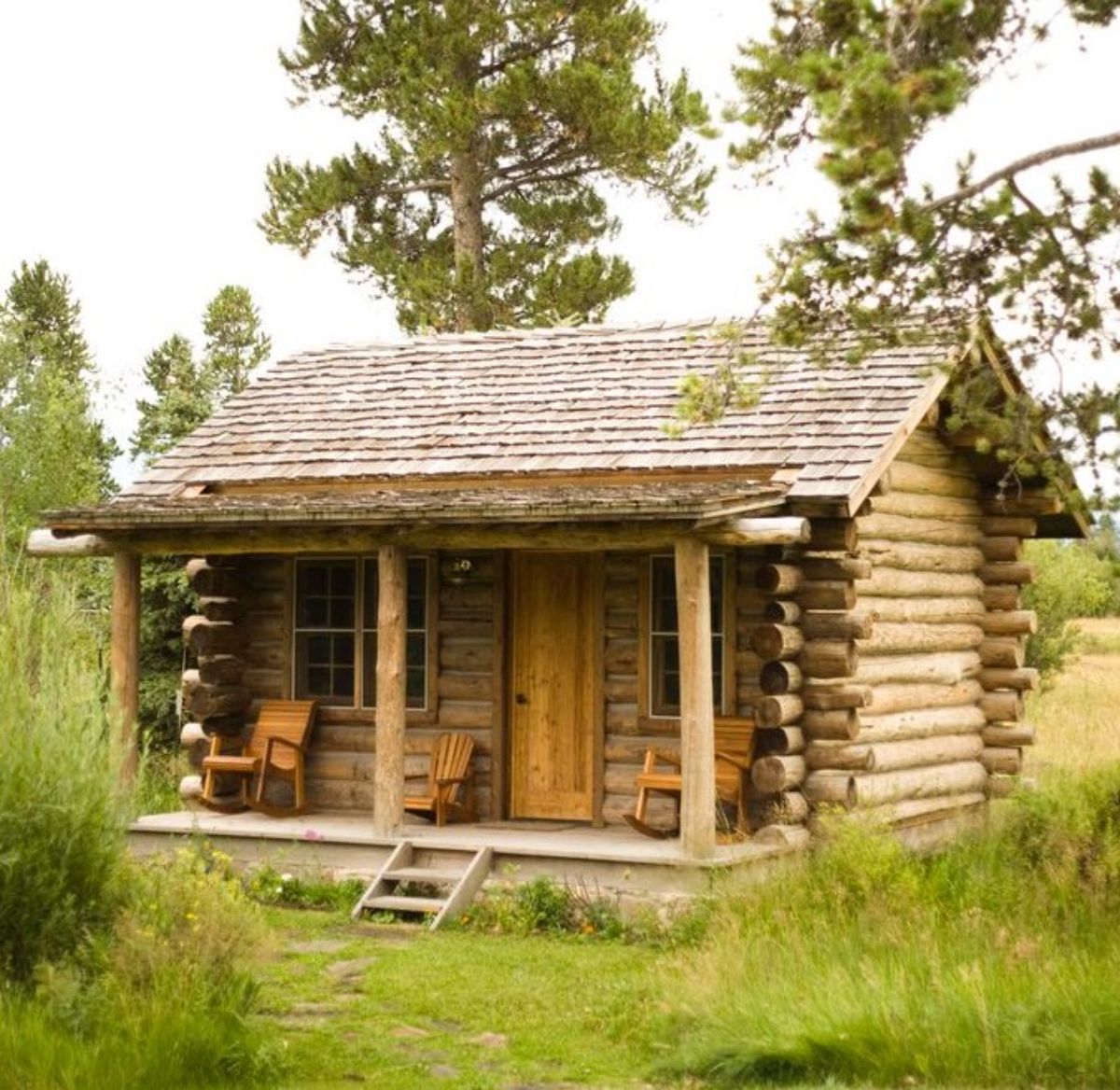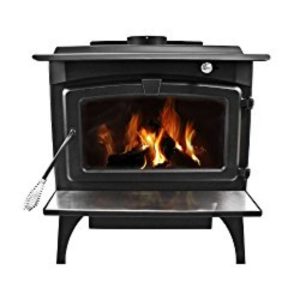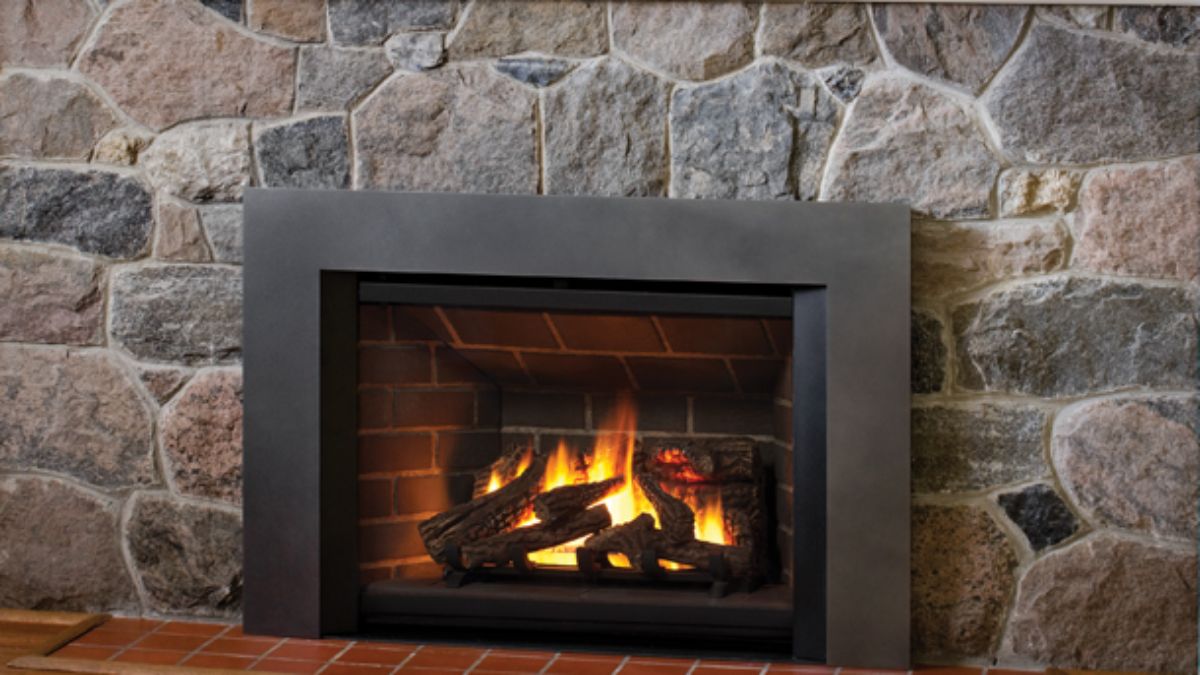Small cabin heating can be a challenge if you’re off the grid without access to unlimited electricity or if your small cabin power source can’t handle the load. Heating with electricity is a resistance load and this draws a lot of power. You need to look at alternative fuels for your small cabin heating needs.

Jump to:
Wood Stove for Small Cabin Heating

Wood stoves have come a long way from the open metal boxes of the old days. There are energy-efficient models that can maintain a mostly constant level of heat even overnight. It’s important to protect yourself from carbon monoxide poisoning and I recommend installing a carbon monoxide detector in your cabin to alert you to dangerously high levels of the gas.
The good thing here is that wood is a free and renewable resource generally available to anybody with a decent-sized property. Sure, it requires a lot of work to cut, split and store it as well. But who doesn’t love the smell of a wood fire on a cold day? As the old-timers used to say: firewood warms you twice: once when you cut it and again when you burn it.
You can make your own wood stove, but you want to be certain to provide adequate clearances, both between the stove and the wall and also between the flue and the ceiling where it exits. The best approach for running a wood stove flue and chimney is to provide a double-walled flue, where you run the exhaust flue inside of a larger-diameter stovepipe. This will help to insulate the hot inner pipe from the flammable walls and ceiling.
You should also install your wood stove on a heat shield; using stone, tile, or fire brick to build a platform for it to rest on. If your wood stove is installed in a corner you should include a fire brick layer on the surrounding walls. Add a metal cap and screen on top of your chimney to keep out rodents and rain.
For more details on minimum clearances for woodstoves you can check this small cabin forum.
Propane Heater or Fireplace Gas Insert

If you have access to propane or a way to refill propane tanks, a great alternative is to use a propane heater or gas insert for your small cabin heating needs. Instead of a portable propane heater, I would recommend looking at fireplace gas inserts. These have become very efficient and there are zero-clearance models that don’t require special heat-resistant installation. You can plug them directly into any fireplace surround, attach a line to the propane tank and have heat on demand.
These gas inserts can be set to go on with a thermostat or even using a remote, like your TV controller. There is virtually no smell and using fake logs you get a reasonable facsimile of a wood fire, while also helping to retain the heat as the logs heat up. Although burning propane inside does give off a very slight amount of moisture, this can be a good thing in a dry cabin over the winter.
Passive Solar and Retention Walls
Another approach to your small cabin heating requirements is to approach it passively. If you design in elements of energy conservation and efficiency when you design your log home, you can often forego additional heating altogether.
A great way to do this is by simply siting your log home to take full advantage of passive solar collection during the day by facing large fixed windows towards the south. Add large overhangs on the roof to protect from the summer sun but still allow in the low-lying winter sun. If you also incorporate interior heat retention walls made of stone, these will heat up slowly when the sun hits them during the day and give back the heat slowly overnight.
Water Heating for Small Cabins
In addition to heating your cabin, you also have to consider heating your water.
There are basically four options for heating your water.
- Electric Water Heater - if you are on the grid you can simply use an electric water heater. Be sure to insulate this very well so you don’t lose energy from the tank. It’s also a good idea to insulate the hot water lines going to your fixtures so the water doesn’t lose heat this way.
- Gas Water Heater - if you happen to be on or near a natural gas supply line you can tap into that and have unlimited hot water. If you are far out in the sticks another option would be to use propane, although this would require refilling and changing out tanks.
- Solar Water Heater - for true off-grid applications the best way is to install a solar water heater. This way you can enjoy free hot water any time you have sun available for a few hours a day. With a large enough storage tank you can hold over hot water for cloudy days as well. This can be as simple as a black drum that heats up as it’s exposed to the sun, or it can be a system of piping on your cabin roof that circulates water that is heated by the sun into a reservoir that slowly heats up. These systems can get surprisingly hot, heating your water supply to over 100°F.
- Wood-burning Stove Water Heater - you could also pipe a water circulation system through a wood-burning stove with water heating coils in the stove or flue that heat up the water. Using either natural convection or a small pump to circulate the water ensures an even heating. Be sure to include a pressure relief valve in the system in case of excessive heating which could boil the water into high-pressure steam.
Living off the grid or building a small log home requires you to think creatively about your basic needs. Small cabin heating challenges can be overcome with planning and a little extra work, and you will enjoy the feeling of self-sufficiency you gain.
This is part of our series on handling various aspects of building small cabins. You can check out all the articles here:
- Small Cabins
- Small Cabin Site Preparation
- Small Cabin Heating - this page
- Small Cabin Water Supply
- Small Cabin Power
- Small Cabin Energy Storage
- Small Cabin Energy Needs
- Free Small Cabin Plans
More Small Cabin Pages:
Free Small Cabin Plans Free small cabin plans are available for download for the DIY log home builder.
Tiny Cabin A tiny cabin reduces the impact on resources, the environment, and your wallet.
Pallet Cabins Pallet cabins are one way to affordably build a tiny home using cheap, recycled materials.
Build a Small Log Cabin How To Build a Small Log Cabin: Reprinted from December 1983 Popular Mechanics by Michael Chotiner with illustrations done by Harry Schaare.
Small Cabin Energy Needs Calculating the small cabin energy needs can be tricky when you’re trying to set up an off-grid energy supply. Let’s look at how to determine your energy needs.



Arunas Bartkus
Simple and informative. Thanks